


** finalists for @FastCompany’s 2017 World Changing Ideas! #WCIAwards **
**Dubai Design Week 2018
Global Grad Show - Top 10 in show**
** Top 100 finalist in DESIGN INTELLIGENCE AWARDS 2017 **
**Dubai Design Week 2018
Global Grad Show - Top 10 in show**
** Top 100 finalist in DESIGN INTELLIGENCE AWARDS 2017 **
Featured on Engadget, TheMarySue, PrattNews
The problem of individual temperature comfort everywhere affects people all over the world. REheat is a suite of products that create mobile individualized micro-climates to facilitate environmental temperature comfort anywhere, anytime.
___
PROBLEM
In my day-to-day life I observed unnecessary heat losses and gains over and over again in different environments, age groups, times of the day, times of the year, and locations in the world. I observed family members opening windows during the winter, and then consuming more energy to reverse a room’s temperature back when it became too cold. The current one-temperature-fits-all approach that exists in all of the spaces in the modern world forces us to sit in discomfort and waste energy in our homes and from our bodies. I saw a clear design and engineering opportunity when no functional solution was found to exist that regulates and maintains the body temperature of individuals in a way that is connected with human needs and that reuses lost human resources.
NEED
Decreasing large HVAC loads would create enormous benefits. Since about 50% of most residential energy consumption is due to HVAC usage, even if usage is lowered 1-2% a significant difference can be made on a global level (U.S. DOE). In 2014, 41% of total US energy consumption was from residential and commercial buildings (U.S. EIA). These are powerful statistics and show what an impact REheat could make on the world. A project with similar goals, ATTACH (Adaptive Textiles Technology with Active Cooling and Heating), from the University of California, San Diego, predicted that retaining body heat could reduce heating bills by 15%.
PRIMARY RESEARCH
I was able to interview extreme users - people that have experienced spinal cord injuries that have resulted in damage to the autonomic nervous system and therefore to their temperature self-regulation. It is very clear that is no distinct solution exists for their more extreme need for an individualized, personal heating system. All who were interviewed discussed an imperfect series of workarounds to deal with different situations. These workarounds are ineffective, not always available, wasteful and often do not effectively solve the problem. All personalized heating systems (electric blankets or clothing, glove or shoe heated inserts, etc.) were ineffective in some way, or extremely uncomfortable, and were often abandoned. They spoke of embarrassment of overdressing in situations, or for asking for temperatures to be turned to a level that others would find uncomfortable.
In speaking to both groups - laymen users and extreme users - I found that the most crucial issues to users were ease of use, customization, comfort, visual feedback on temperature and manual override function.
In speaking to both groups - laymen users and extreme users - I found that the most crucial issues to users were ease of use, customization, comfort, visual feedback on temperature and manual override function.
SECONDARY RESEARCH - MARKET RESEARCH


IDEATION, SKETCHING AND PROTOTYPING



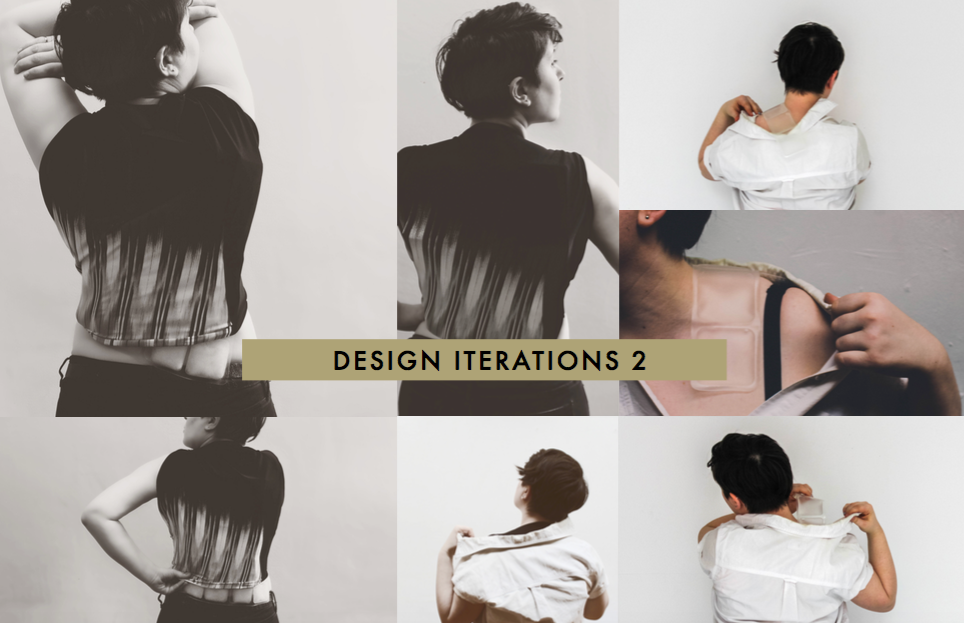

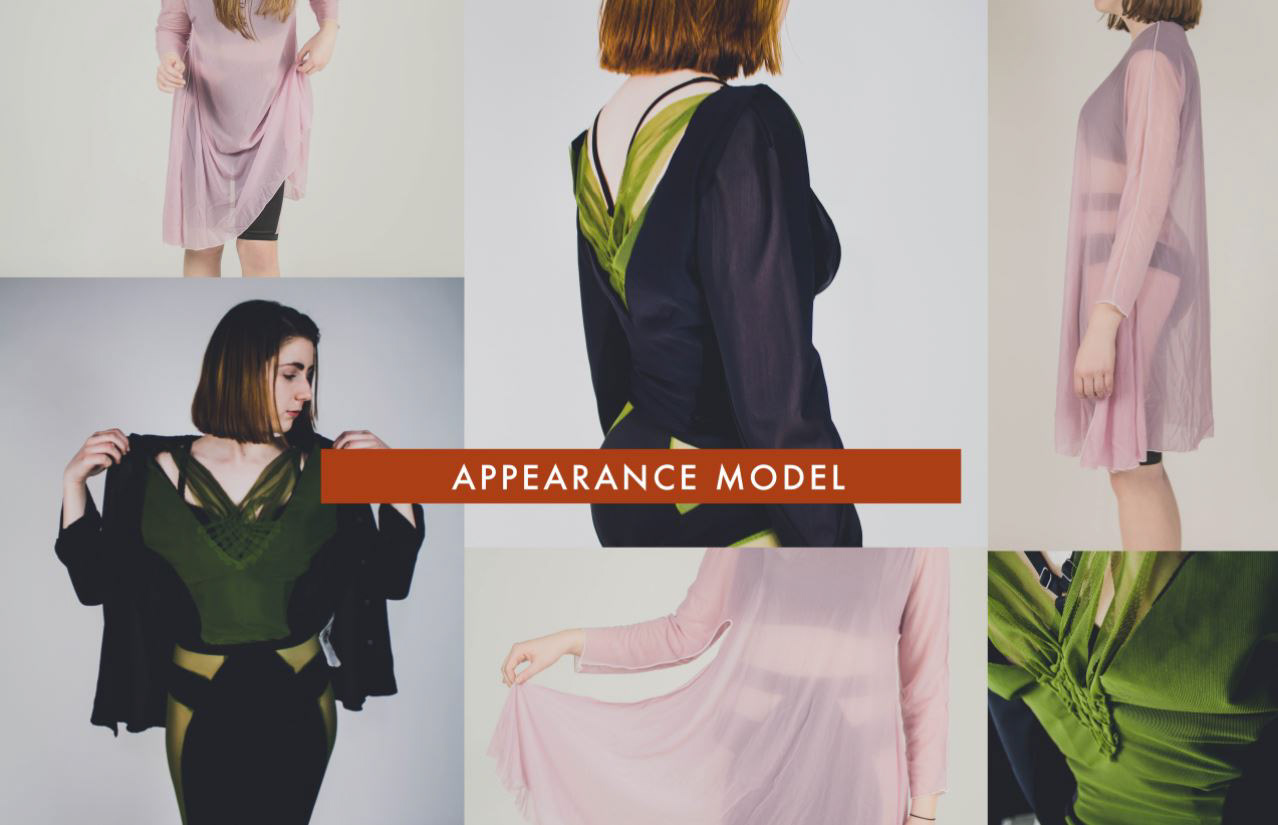

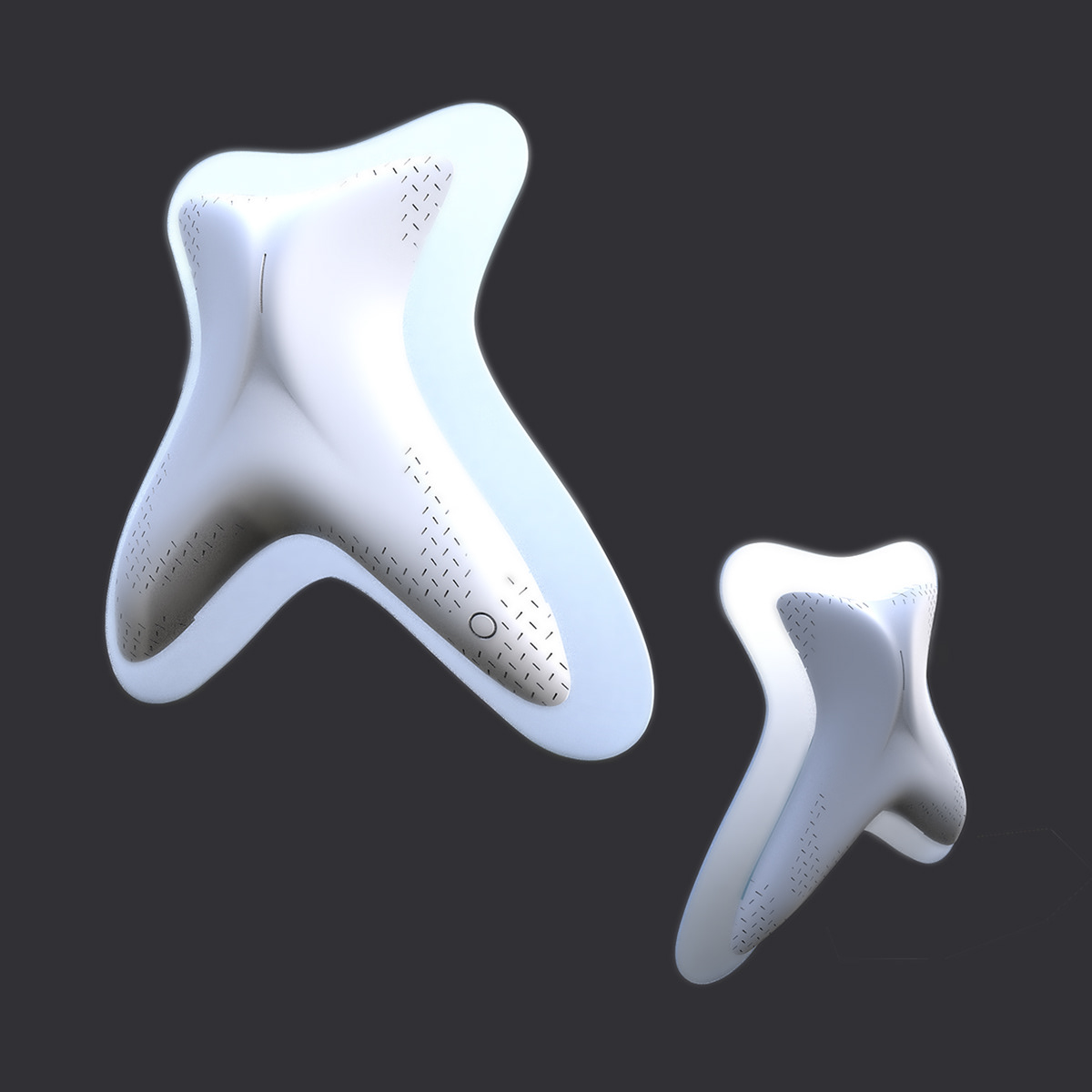
APP/SYSTEM DESIGN PROCESS
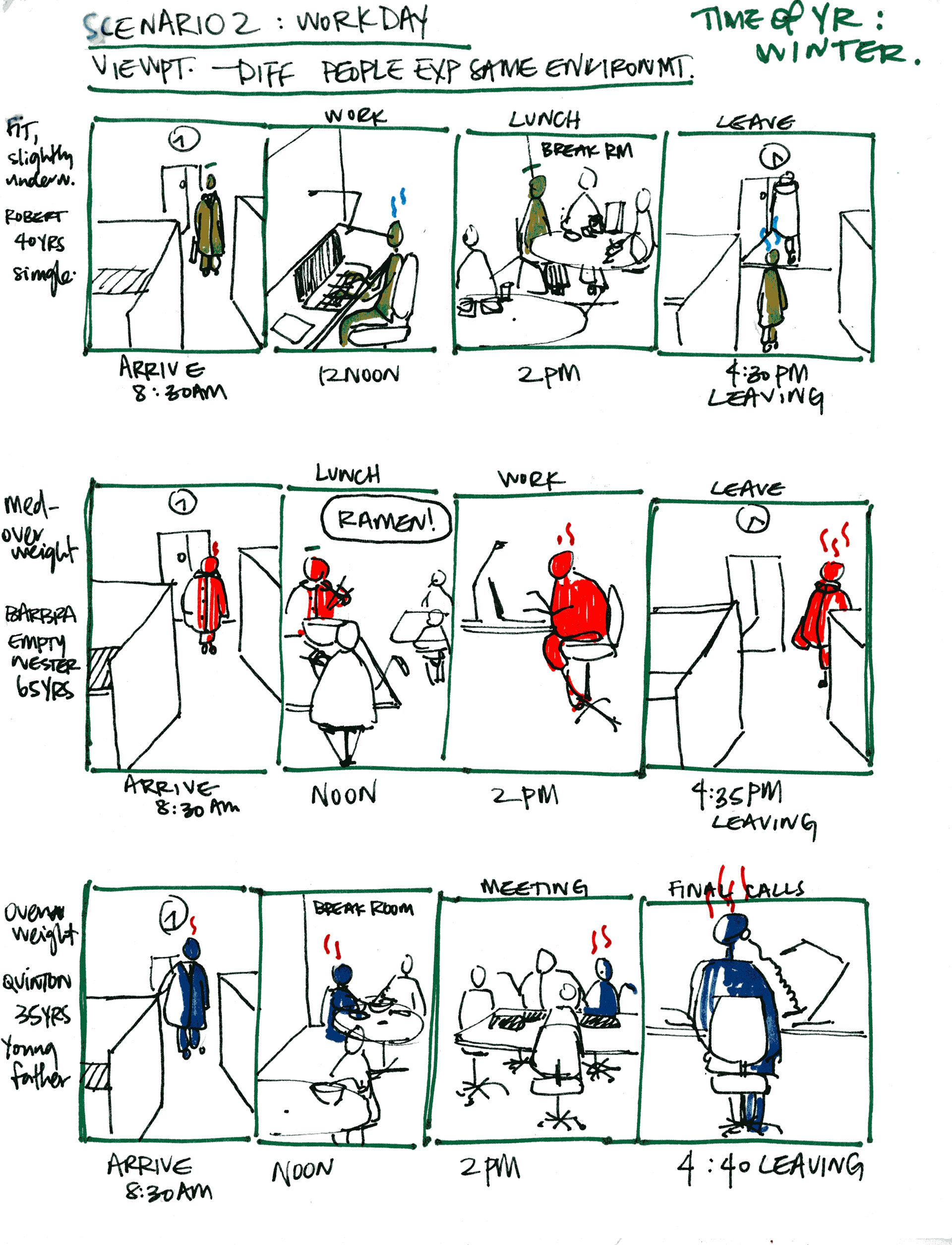
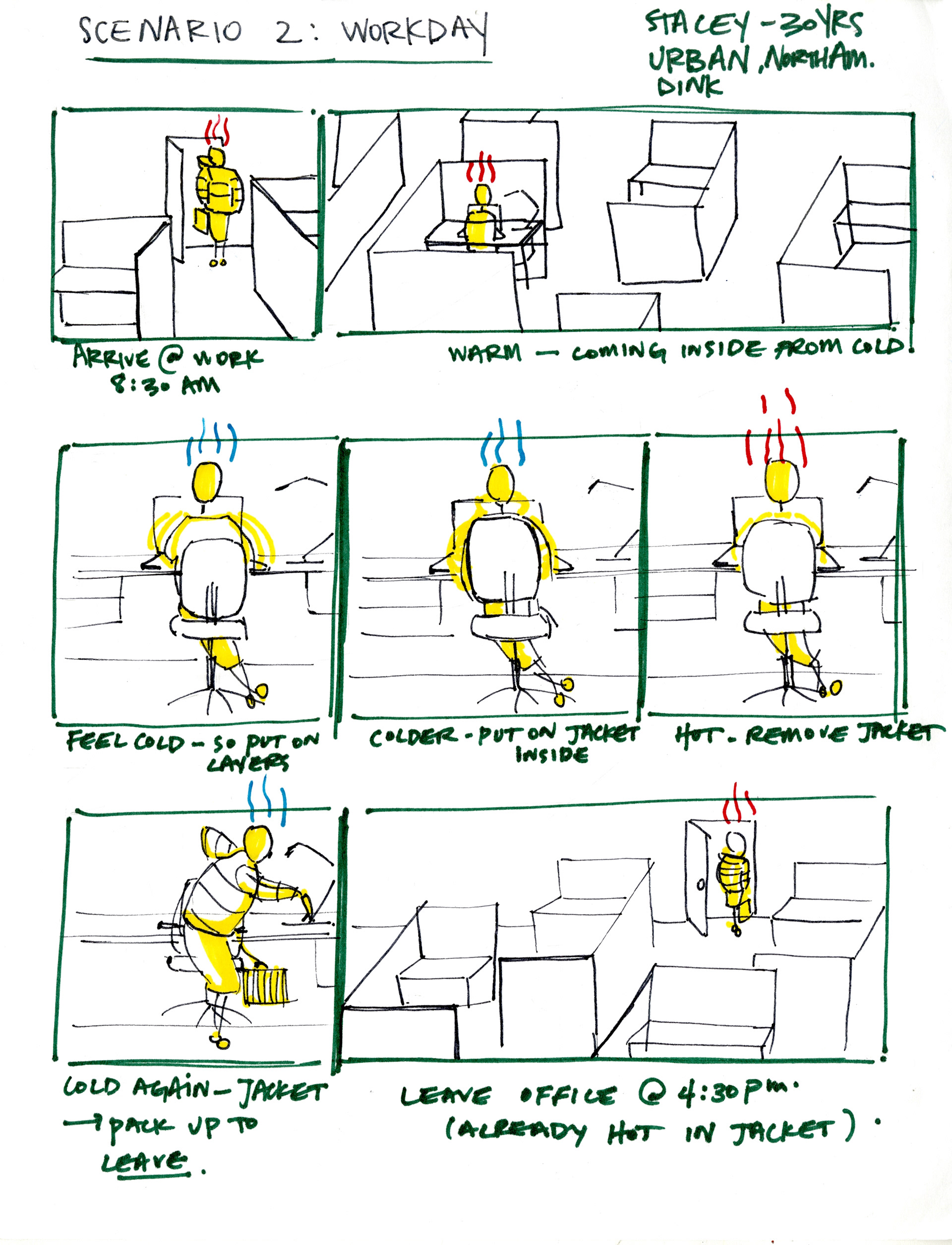
Sketches showing pain point scenarios for users.
Both the undergarment set and/or patch system pair with an accompanying application that gives the user a visualization of the product working and allows the user to manually-override the automatic temperature settings. Without the application the user would likely never notice that the products are working - they would just feel comfortable. The application is not necessary for most users but is valuable for demonstrating the value and functionality of the products.
With a temperature sensor embedded in the undergarment and patch system, the application allows users to set their own ideal temperature within the optimal range. Based on this temperature, the suit automatically turns on back-up heaters or coolers if necessary. It gives feedback to let you know how much you are powering the suit yourself. It also collects data to optimize your temperature settings based on your location or assigned presets.
Interviewing quadriplegics and researching the effects of their injury demonstrated the importance of visual feedback and manual override control of the suit’s temperature.
With a temperature sensor embedded in the undergarment and patch system, the application allows users to set their own ideal temperature within the optimal range. Based on this temperature, the suit automatically turns on back-up heaters or coolers if necessary. It gives feedback to let you know how much you are powering the suit yourself. It also collects data to optimize your temperature settings based on your location or assigned presets.
Interviewing quadriplegics and researching the effects of their injury demonstrated the importance of visual feedback and manual override control of the suit’s temperature.
USER JOURNEY


USER FLOW

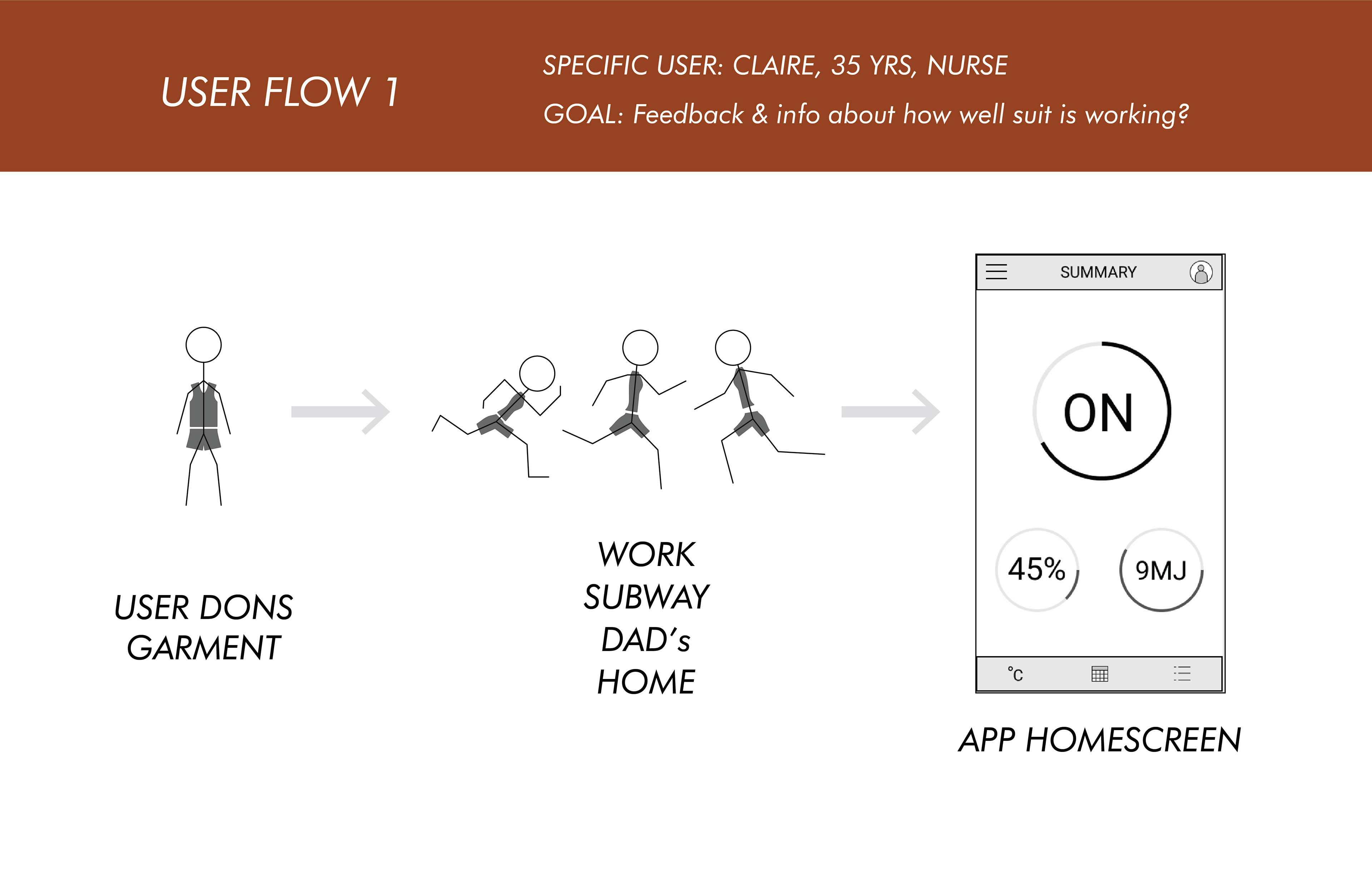
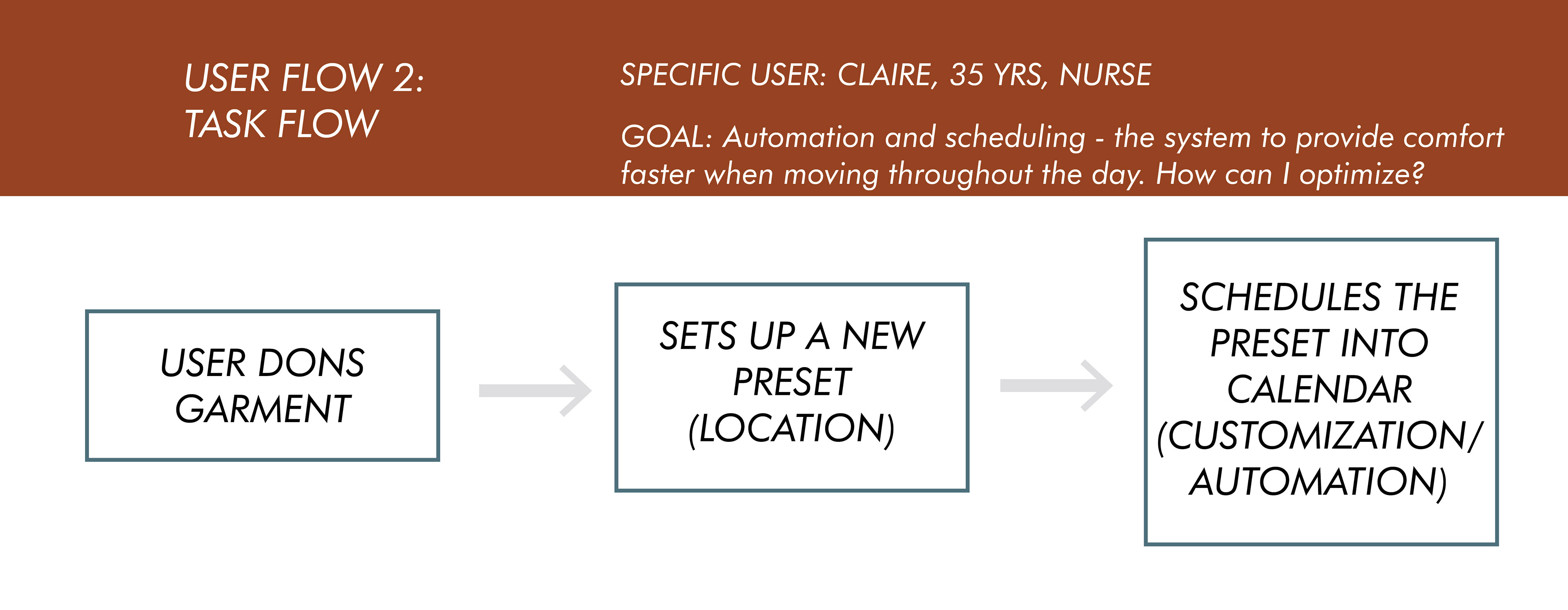

STRATEGY FOR FINAL DESIGN
The design will focus on adult females between the age range of 18 – 65 years old. The product will be designed for urban locations within North American - specifically New York City. One goal of this project is to have a solution that works seamlessly in the ‘everyday’ urban context, as opposed to extreme environments, such as race-car uniforms or space suits.
REheat is designed as an undergarment for the workplace - more specifically as an undergarment for female healthcare professionals. I spoke to different doctors and nurses and repeatedly heard about their uniforms, long hours and varied conditions. Since workers have limited clothing options, and no control over thermostats, this context seemed very appropriate. When speaking with nurses, many of them mentioned that they wear compression shorts or boy short-underwear under their scrubs, and never ever wear a scrub top without a tank top underneath.
REheat is designed as an undergarment for the workplace - more specifically as an undergarment for female healthcare professionals. I spoke to different doctors and nurses and repeatedly heard about their uniforms, long hours and varied conditions. Since workers have limited clothing options, and no control over thermostats, this context seemed very appropriate. When speaking with nurses, many of them mentioned that they wear compression shorts or boy short-underwear under their scrubs, and never ever wear a scrub top without a tank top underneath.
REheat has also considered the office workplace as a secondary context. Many New Yorkers visit the office every day, 5 days a week, approximately 8 hours per day (2015, US Dept of Labor). This secondary environment was chosen because of the number of times it was brought up during interviews with users and in the survey response. Many people found the environmental temperature within the workplace to be either too cold or too hot. Upon further research, according to a New York Times article from August 2015, many women find workplace temperatures either far too cold or too hot because most office buildings are set to temperatures based on the metabolic rates of men. Often for the workplace the thermostat setting is based on what is believed to make workers most productive. The goal of this product will not be focused on productivity, but on personal comfort and health.
____
FINAL DESIGN
REheat is simple – using modern materials, REheat stores and re-emits your own body heat when you need it, and allows you to monitor your temperature with unobtrusive visuals. It reduces the need for high HVAC loads and speaks to the larger issue of constant comfort.
Two products were created:
Two products were created:
1. An undergarment for women, the gender most affected by this problem.
2. An app that gives the user a visualization of the product working and allows for manual-override.
The undergarment includes two heating/cooling components: 1. Phase Change Material and 2. Peltier Units. The phase change material stores and re-releases your body heat to heat and cool you, and the Peltier units act as a back up heating and cooling unit, for more extreme temperatures.
The products on the market that work to heat and cool individuals all were focused on extreme applications. I saw the opportunity to create a product focused on the everyday.
REheat gives added comfort anywhere, anytime, in any temperature without the user always having to over-prepare. With REheat you are actually recycling your own body heat and energy. This system can considerably reduce energy consumption (possible 5% to 15% reduction of HVAC system use) due to heating and cooling. With a back up power source and comfort testing, it works better than existing wearables and existing central HVAC systems.
REheat does not require any significant lifestyle changes, and gives visual feedback about how the suit is being powered. It also works automatically to adjust to an optimal temperature and enables a manually override of the temperature settings, unlike both HVAC systems and existing wearable heating and cooling garments.
REheat gives added comfort anywhere, anytime, in any temperature without the user always having to over-prepare. With REheat you are actually recycling your own body heat and energy. This system can considerably reduce energy consumption (possible 5% to 15% reduction of HVAC system use) due to heating and cooling. With a back up power source and comfort testing, it works better than existing wearables and existing central HVAC systems.
REheat does not require any significant lifestyle changes, and gives visual feedback about how the suit is being powered. It also works automatically to adjust to an optimal temperature and enables a manually override of the temperature settings, unlike both HVAC systems and existing wearable heating and cooling garments.
Both the undergarment set and/or patch system pair with an accompanying application that gives the user a visualization of the product working and allows the user to manually-override the automatic temperature settings. Without the application the user would likely never notice that the products are working - they would just feel comfortable. The application is not necessary for most users but is valuable for demonstrating the value and functionality of the products.
When one person feels uncomfortable in their office job it is not a big deal. But when this happens to millions around the world, in every country, everyday, who spend so much of their time indoors, it has social impact and becomes a problem that cannot be ignored.